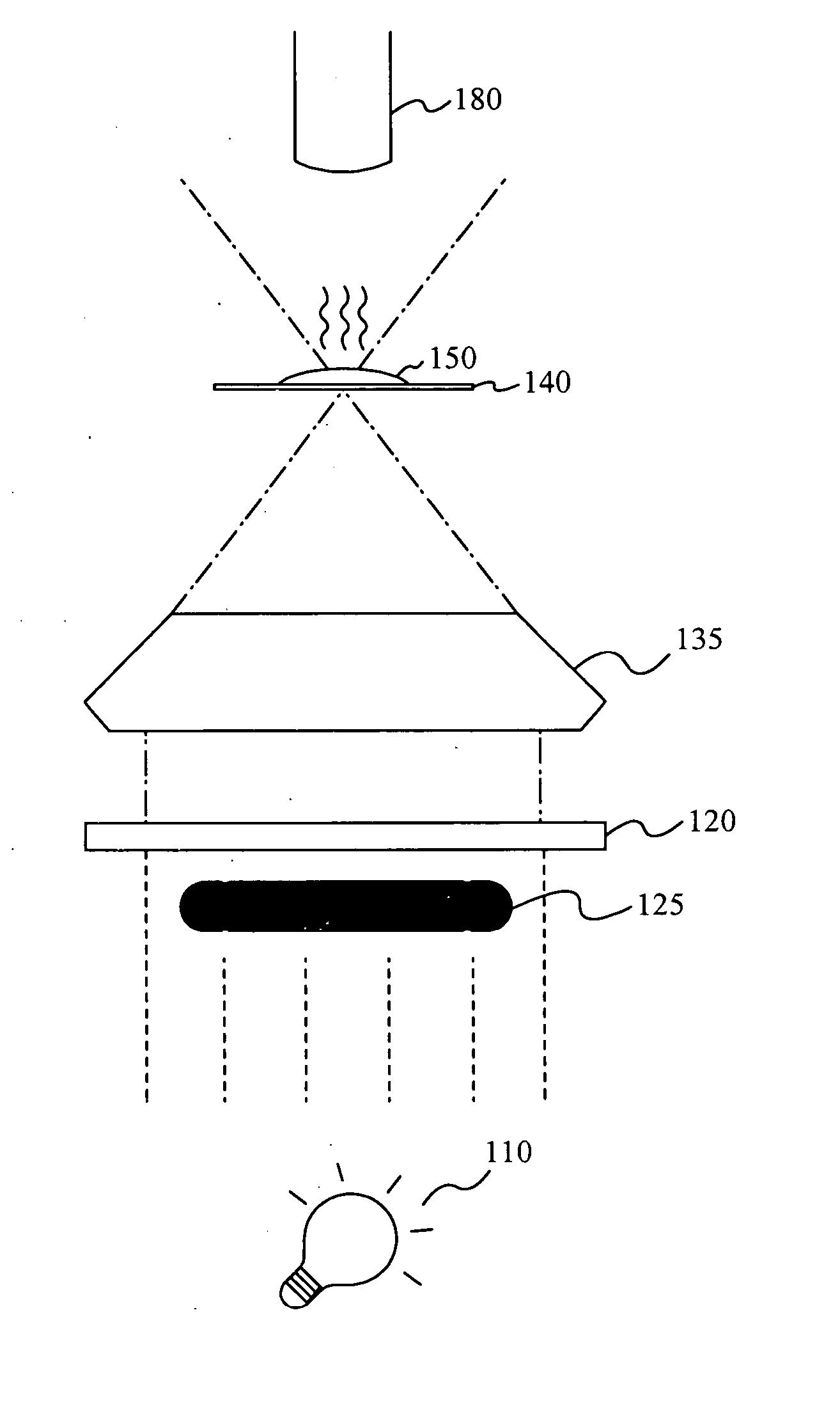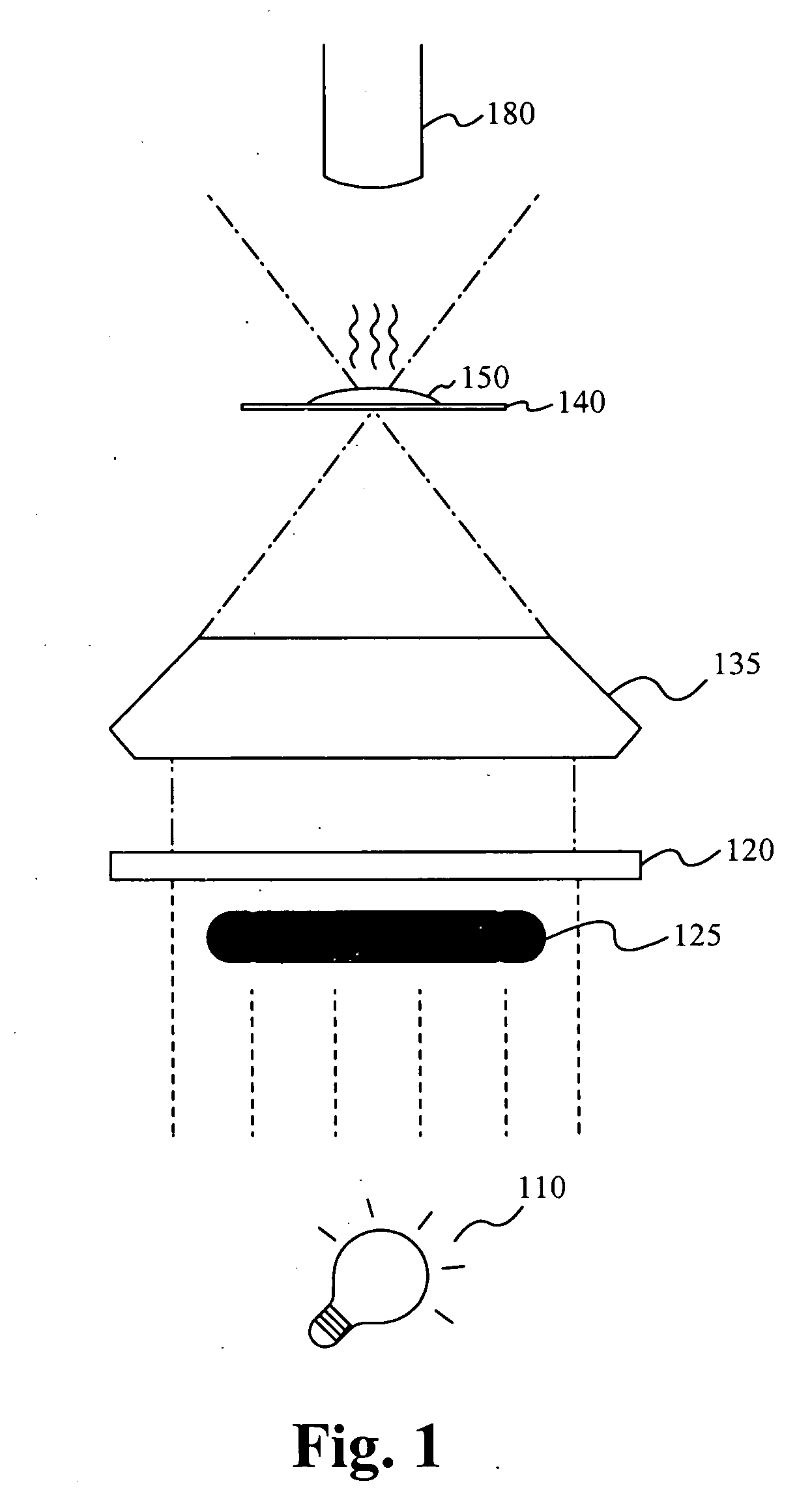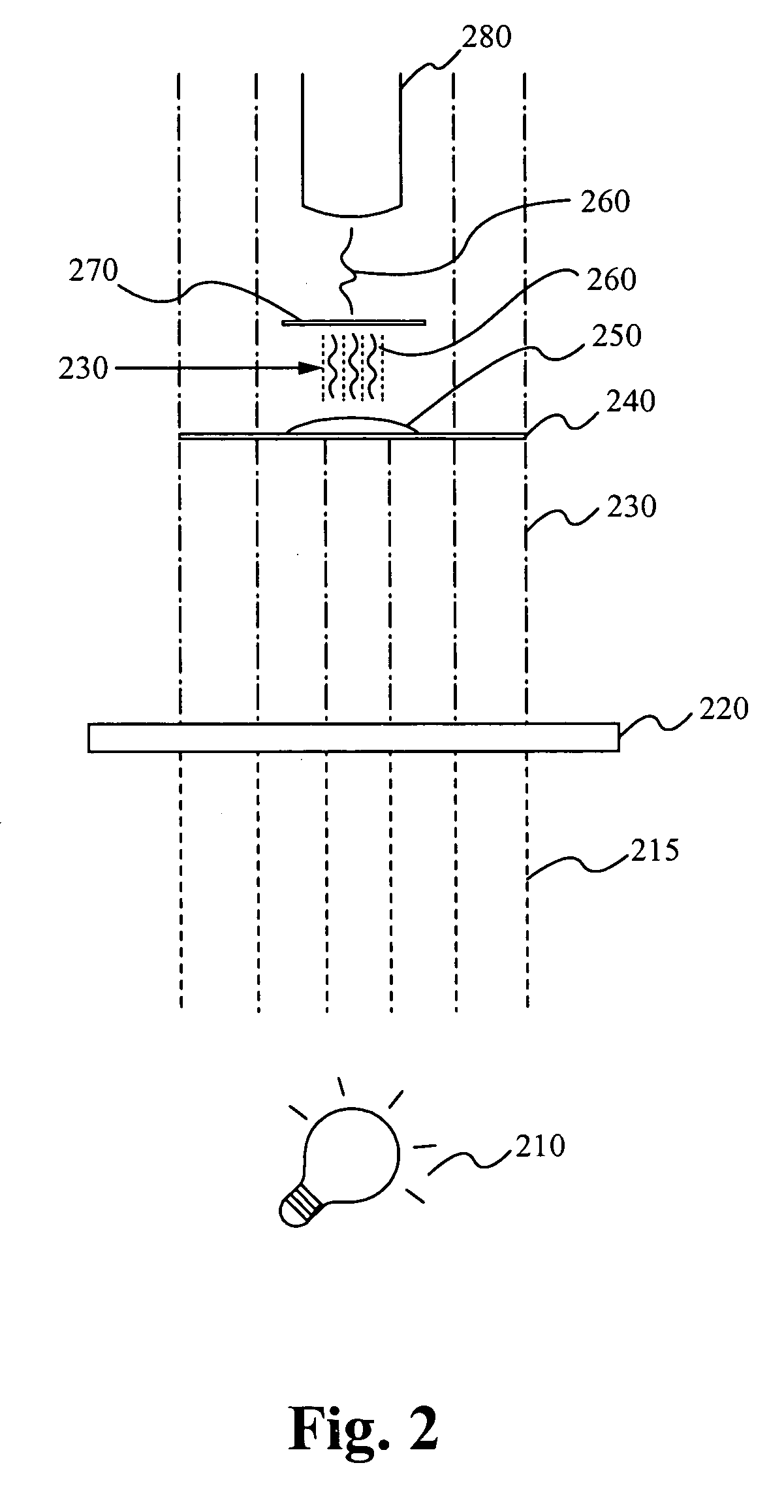Simultaneous observation of darkfield images and fluorescence using filter and diaphragm
a filter and diaphragm technology, applied in the field of optical microscopy, can solve the problems of inability to observe living specimens, loss of cell components, and inability to leave artifacts and cell damage that were not present, and achieve the effect of more scattered ligh
- Summary
- Abstract
- Description
- Claims
- Application Information
AI Technical Summary
Benefits of technology
Problems solved by technology
Method used
Image
Examples
Embodiment Construction
[0032] Darkfield Microscopy and Fluorescence Microscopy techniques are similar at a basic level. Both involve shining incident light from a light source onto a sample to produce images. Both techniques effectively produce high resolution images of small specimen. The present invention allows a scientist the option of using both techniques simultaneously.
[0033] The basic Darkfield Microscopy model involves directing incident light onto a sample at a certain angle. FIG. 1 illustrates the darkfield microscopy technique. A light source 110 directs light at a Darkfield Condenser 135. A central block 125 is used to block the center portion of light, such that only a hollow cylinder of light travels toward the Darkfield Condenser 135. A filter 120 may also be included to filter out certain wavelengths of incident light. The Darkfield Condenser 135 directs the light at some angle toward the slide 140 and the specimen 150. When the light enters the specimen 150, some of it is diffracted and...
PUM
 Login to View More
Login to View More Abstract
Description
Claims
Application Information
 Login to View More
Login to View More - R&D
- Intellectual Property
- Life Sciences
- Materials
- Tech Scout
- Unparalleled Data Quality
- Higher Quality Content
- 60% Fewer Hallucinations
Browse by: Latest US Patents, China's latest patents, Technical Efficacy Thesaurus, Application Domain, Technology Topic, Popular Technical Reports.
© 2025 PatSnap. All rights reserved.Legal|Privacy policy|Modern Slavery Act Transparency Statement|Sitemap|About US| Contact US: help@patsnap.com



